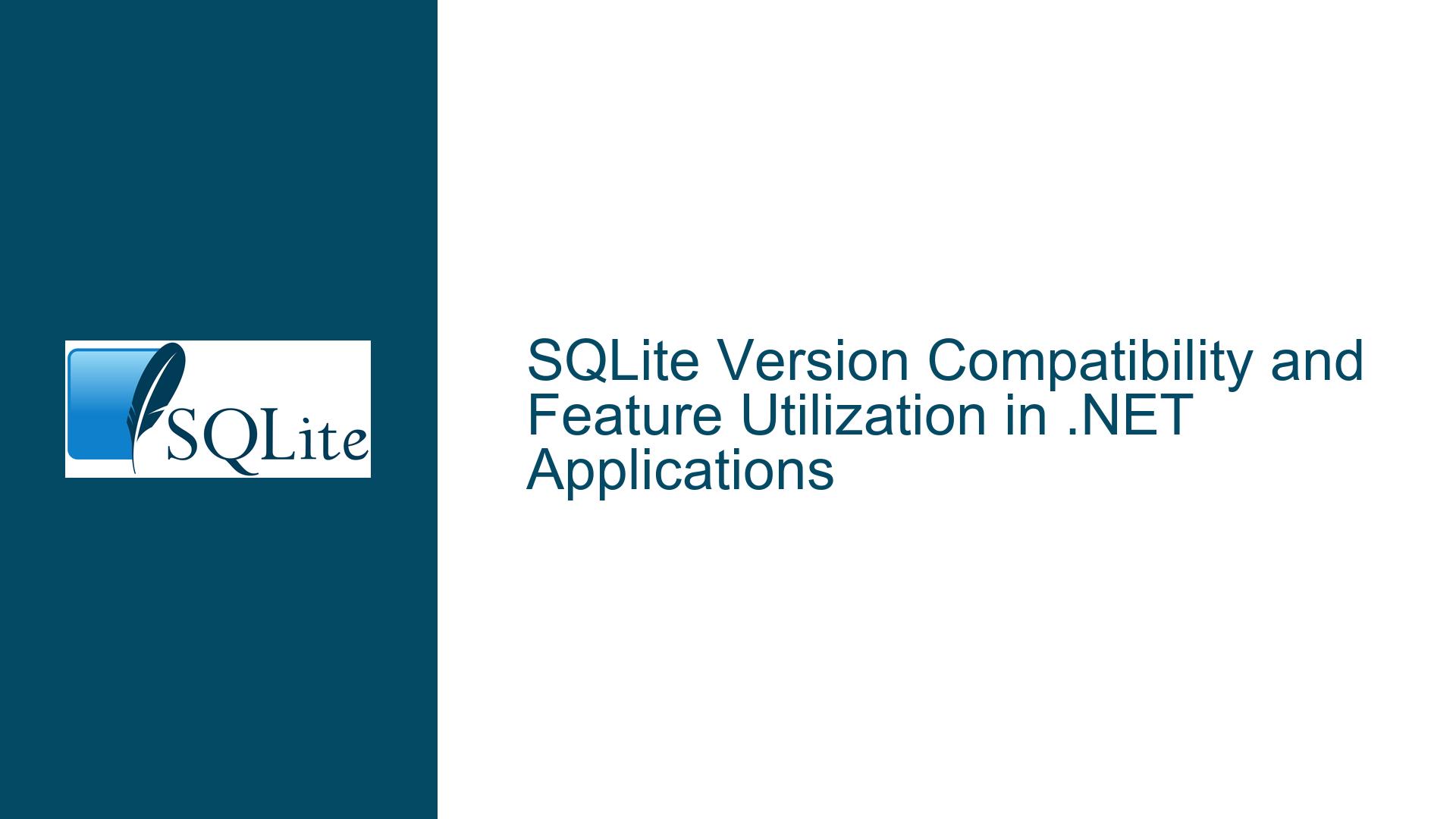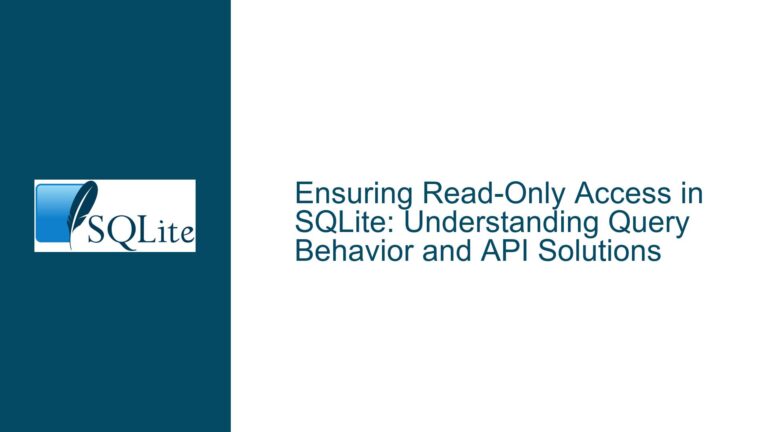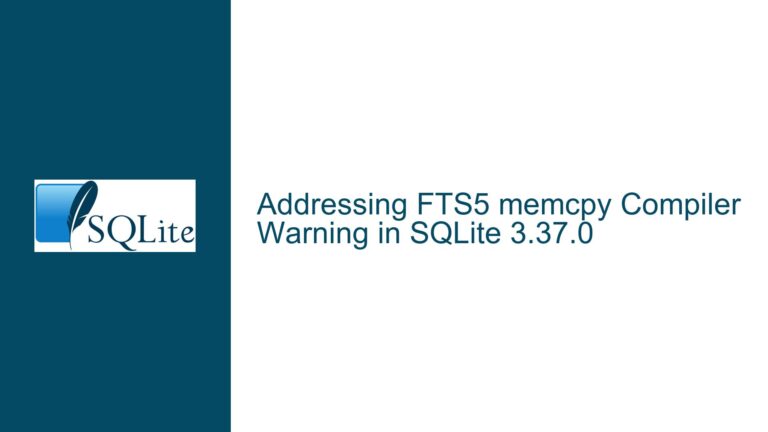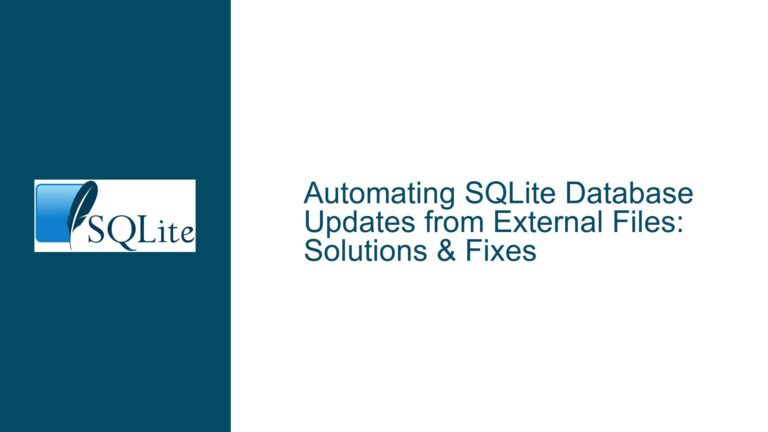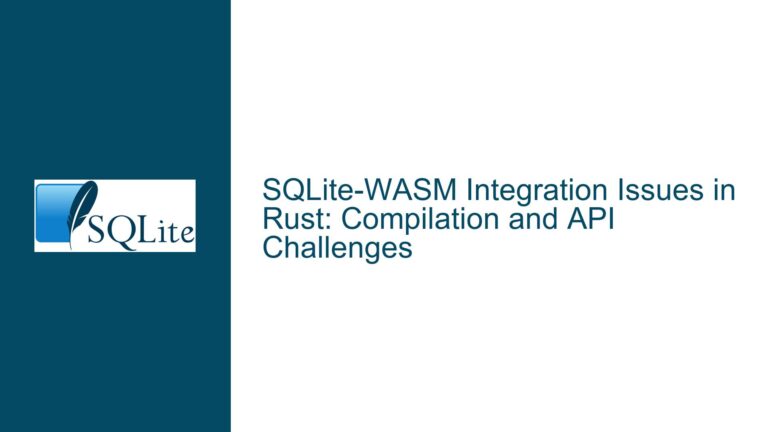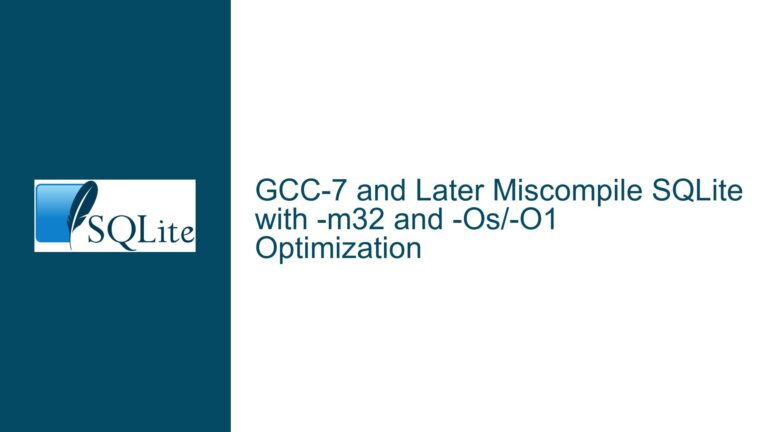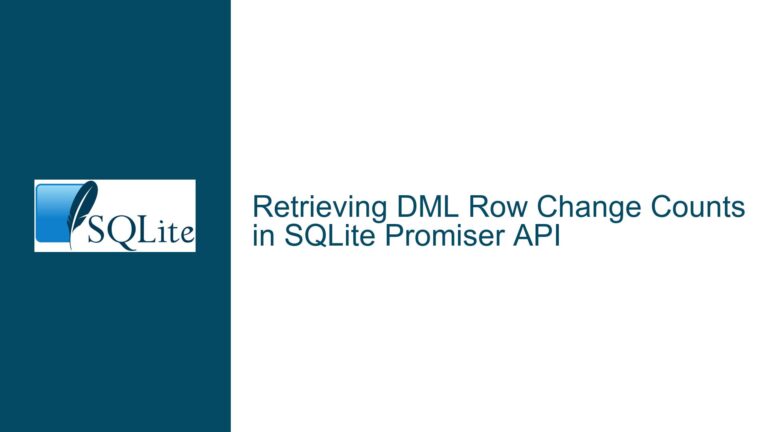SQLite Version Compatibility and Feature Utilization in .NET Applications
SQLite 3.33.0 UPDATE FROM Syntax and .NET Integration Challenges
The integration of SQLite into .NET applications, particularly when migrating from Microsoft Access, presents unique challenges, especially when leveraging newer SQLite features such as the UPDATE ... FROM ... syntax introduced in SQLite 3.33.0. This syntax allows for more efficient data manipulation by reducing the need for multiple round trips to the database, which is crucial for performance optimization in data-intensive applications. However, the current System.Data.SQLite package (version 1.0.113.1) is compiled against SQLite 3.32.1, which does not support this new syntax. This discrepancy necessitates either custom compilation of the System.Data.SQLite package against SQLite 3.33.0 or finding alternative methods to achieve similar functionality without direct support for UPDATE ... FROM ....
The UPDATE ... FROM ... syntax in SQLite 3.33.0 is not compatible with the Sybase UPDATE FROM syntax used by Microsoft products, including Access. This incompatibility means that while the syntax can be used in native SQLite queries, it cannot be parsed or composed by Microsoft products. This limitation is significant for applications that rely on database-agnostic data layers, as it requires careful consideration of how SQL queries are constructed and executed across different database systems.
System.Data.SQLite vs. Microsoft.Data.SQLite vs. ODBC: Feature and Performance Trade-offs
When integrating SQLite into .NET applications, developers must choose between using System.Data.SQLite, Microsoft.Data.SQLite, or ODBC for database connectivity. Each option has its own set of features, performance characteristics, and limitations, making the choice highly dependent on the specific requirements of the application.
System.Data.SQLite and Microsoft.Data.SQLite are both .NET adapters that implement the interfaces defined for System.Data, allowing direct access to the SQLite library. These adapters provide access to a wide range of SQLite-specific features, including user-defined functions, virtual tables, and control over compile options. However, they are limited by the version of SQLite they are compiled against, which can restrict access to newer features like the UPDATE ... FROM ... syntax.
On the other hand, ODBC provides a more generic interface for database connectivity, supporting a wide range of database engines, including SQLite. While ODBC offers a smaller footprint and broader compatibility, it lacks access to many SQLite-specific features. For example, ODBC does not support the SQLite Backup API, user-defined functions, or the ability to load external libraries. Additionally, ODBC does not provide the same level of control over SQLite configuration options, such as enabling extensions or setting custom page sizes.
The choice between these options ultimately depends on the specific needs of the application. If the application requires access to advanced SQLite features or needs to be tightly integrated with the SQLite engine, System.Data.SQLite or Microsoft.Data.SQLite may be the better choice. However, if the application primarily performs CRUD operations and values a smaller footprint and broader compatibility, ODBC may be more suitable.
Implementing SQLite Features and Ensuring Compatibility in .NET Applications
To fully leverage SQLite’s capabilities in .NET applications, developers must carefully consider how to implement and ensure compatibility with the desired features. This involves not only selecting the appropriate database connectivity option but also understanding the limitations and trade-offs associated with each choice.
One approach to accessing newer SQLite features, such as the UPDATE ... FROM ... syntax, is to compile the System.Data.SQLite package against the desired version of SQLite. This requires building the package from source, which can be a complex process but allows for greater control over the features and performance of the SQLite engine. Alternatively, developers can use native SQL queries to directly access the desired features, bypassing the limitations of the .NET adapters.
For applications that require advanced SQLite features, such as user-defined functions or virtual tables, System.Data.SQLite or Microsoft.Data.SQLite is the preferred choice. These adapters provide direct access to the SQLite C API, allowing developers to implement custom functionality and optimize performance. However, this approach requires a deeper understanding of the SQLite engine and may involve more complex development and maintenance.
In cases where ODBC is used, developers must be aware of the limitations and workarounds required to achieve similar functionality. For example, while ODBC does not support the SQLite Backup API, developers can implement custom backup solutions using native SQL queries or external tools. Similarly, while ODBC does not support user-defined functions, developers can use the SQLite CLI to load and execute custom functions, albeit with additional complexity.
Ultimately, the key to successfully integrating SQLite into .NET applications lies in understanding the specific requirements of the application and carefully selecting the appropriate tools and techniques to meet those requirements. By considering the trade-offs and limitations of each option, developers can ensure that their applications are both performant and compatible with the desired SQLite features.
| Feature | System.Data.SQLite | Microsoft.Data.SQLite | ODBC |
|---|---|---|---|
| Access to SQLite-specific features | Yes | Yes | Limited |
| Support for newer SQLite syntax | Requires custom build | Requires custom build | No |
| User-defined functions | Yes | Yes | No |
| Virtual tables | Yes | Yes | No |
| Backup API | Yes | Yes | No |
| Control over SQLite configuration | Yes | Yes | Limited |
| Smaller footprint | No | No | Yes |
| Broader compatibility | No | No | Yes |
In conclusion, the integration of SQLite into .NET applications requires careful consideration of the specific requirements and trade-offs associated with each database connectivity option. By understanding the limitations and capabilities of System.Data.SQLite, Microsoft.Data.SQLite, and ODBC, developers can make informed decisions that ensure their applications are both performant and compatible with the desired SQLite features.
